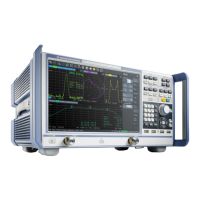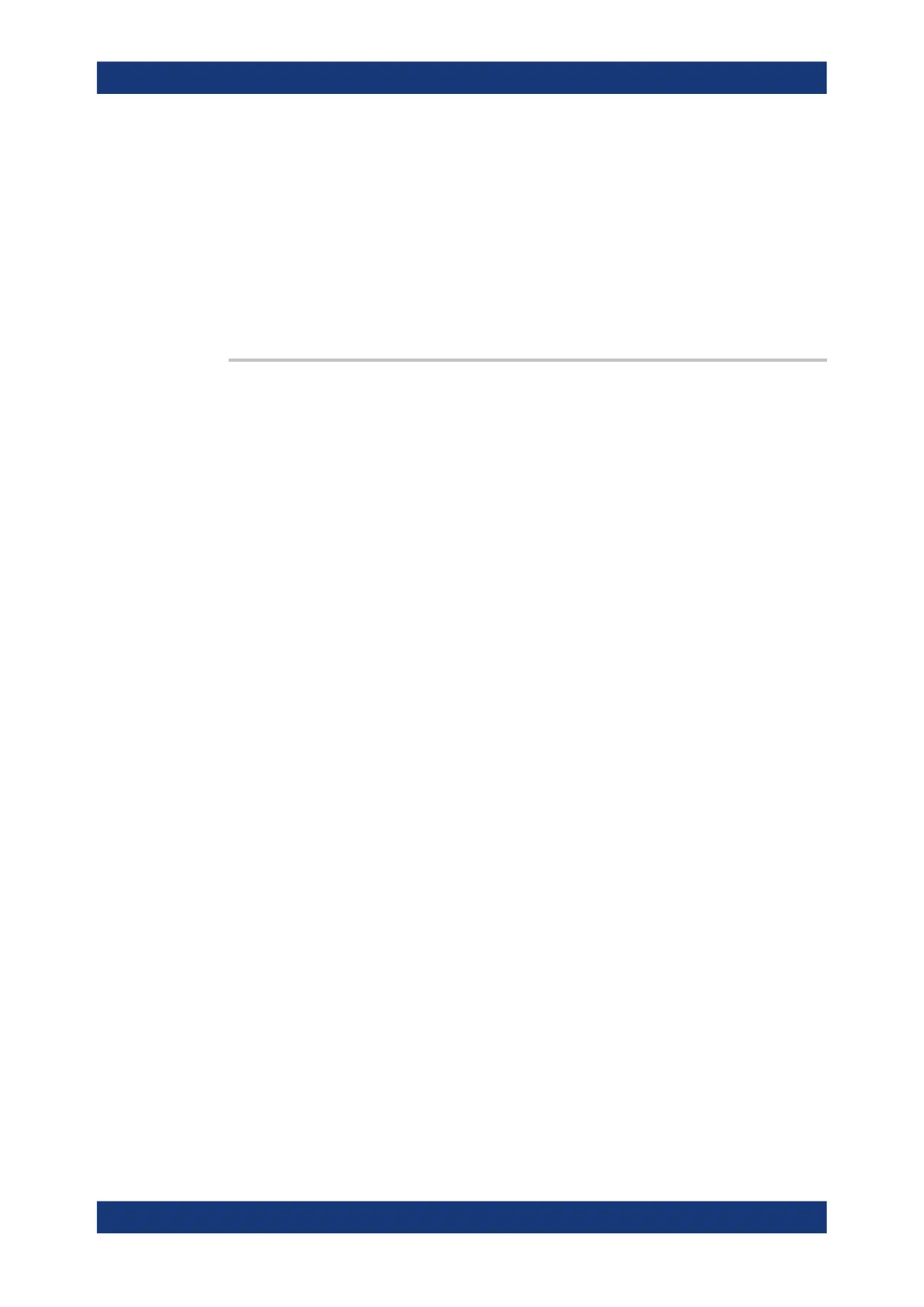Command Reference
R&S
®
ZNB/ZNBT
862User Manual 1173.9163.02 ─ 55
Setting parameters:
<LimShift> Response offset value for all limit line segments.
Range: Virtually no restriction for limit segments
Default unit: NN
Example: See CALCulate<Chn>:LIMit:LOWer:FEED
Usage: Setting only
Manual operation: See "Shift Lines" on page 345
CALCulate<Chn>:LIMit:SEGMent<Seg>:AMPLitude:STARt
<Response>
CALCulate<Chn>:LIMit:SEGMent<Seg>:AMPLitude:STOP <Response>
These commands change the start or the stop response values (i.e. the response val-
ues assigned to the start or stop stimulus values) of a limit line segment. A segment
must be created first to enable the commands (e.g CALCulate<Chn>:LIMit:DATA).
See also Chapter 5.4.1.1, "Rules for Limit Line Definition", on page 133.
Tip: To define the response values of several limit line segments with a single com-
mand, use CALCulate<Chn>:LIMit:LOWer[:DATA] or CALCulate<Chn>:
LIMit:UPPer[:DATA].
Suffix:
<Chn>
.
Channel number used to identify the active trace
<Seg> Segment number
Parameters:
<Response> Response value
Range: Virtually no restriction for limit segments
*RST: The default response values of a segment that is
created by defining its stimulus values only (e.g. by
means of CALCulate<Ch>:LIMit:CONTrol[:DATA]),
are -40 dB.
Default unit: NN
Example:
CALC:LIM:DATA 1,1500000000, 2000000000,2,3
Define an upper limit line segment (segment no. 1) in the stimu-
lus range between 1.5 GHz and 2 GHz, assigning response val-
ues of +2 dB and +3 dB.
:CALC:LIM:SEGM:AMPL:STAR 5; STOP 5; :CALC:LIM:
SEGM:TYPE LMIN
Change the segment to a lower limit line segment with a con-
stant response value of +5 dB.
CALC:LIM:DATA?
Query the type, the stimulus and response values of the created
segment with a single command. The response is
2,1500000000,2000000000,5,5.
Manual operation:
See "Segment List" on page 346
SCPI Command Reference

